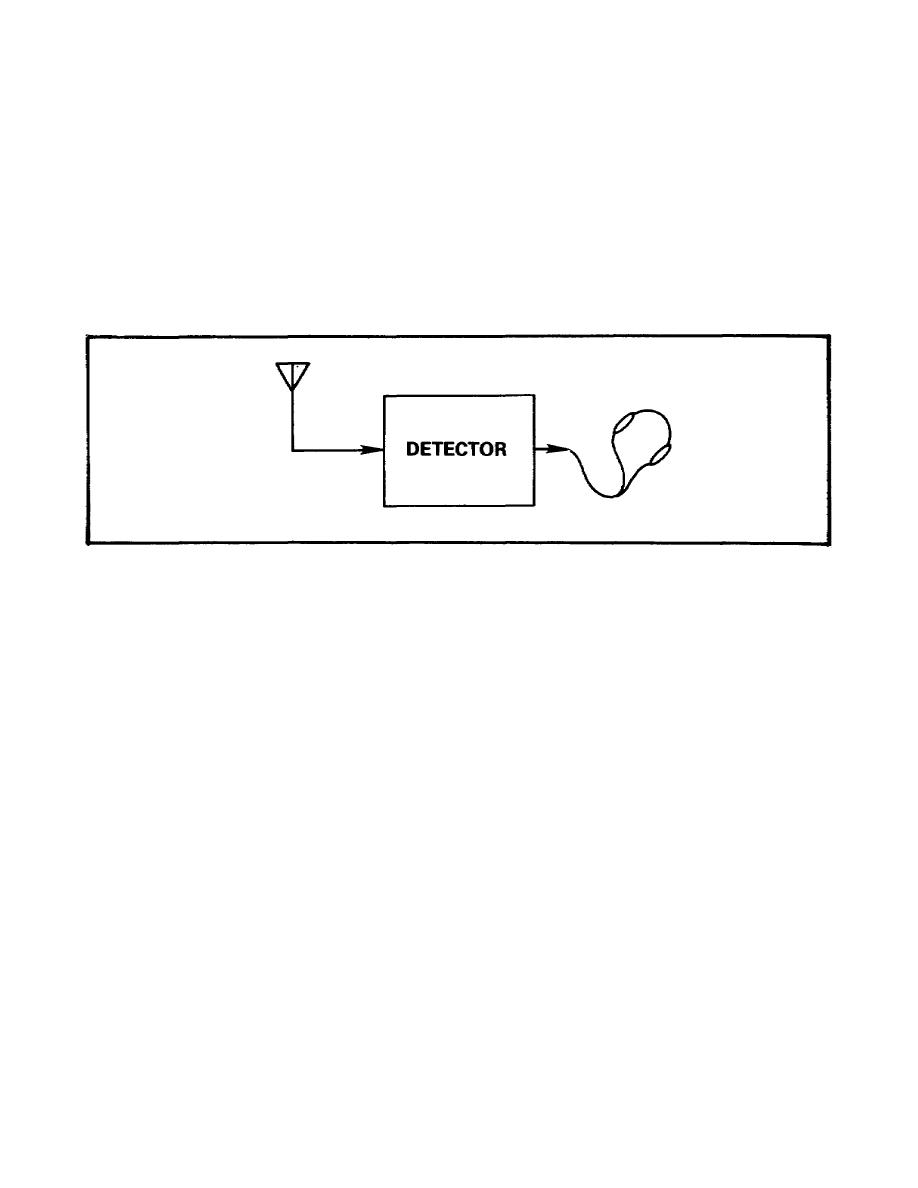
4.
Radio receiver.
a. Detector (demodulator). There are two general kinds of RF signals that can be received by a
radio receiver: modulated RF signals that carry speech, music, or other audio energy, and continuous
wave (CW) signals that are a burst of RF energy conveying intelligence by means of code (dot) signals.
The process whereby the intelligence carried by an RF signal is extracted is called detection or
demodulation. The circuit used to accomplish this is called a detector (figure 3), since it actually detects
the incoming intelligence. The receiver must have some means of tuning in or selecting the frequency
of the desired RF signal. This selective action is necessary to avoid the detection of many RF signals or
different frequencies at the same time. That part of the detector which is used to tune in the desired
signal is called a tuned circuit. In FM radio receivers, the detector is known as a discriminator.
Figure 3. Block Diagram of Simple Radio Receiver.
b. RF amplifier. Because an RF signal diminishes in strength or amplitude at a very rapid rate
after it leaves the transmitting antenna and because many RF signals of various frequencies are crowded
into the radio frequency spectrum, a detector is not used alone. An RF amplifier (figure 4) is included in
the receiver to increase the sensitivity (ability to receive weak signals) and the selectivity (ability to
separate signals of different radio frequencies). The RF amplifier is provided with one or more tuned
circuits so that the desired RF signal (the one to which it is tuned) is amplified more than RF signals of
other frequencies.
3



 Previous Page
Previous Page
